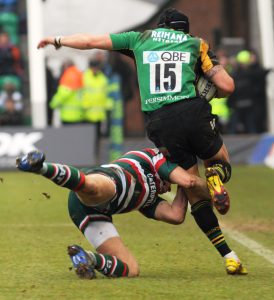Medial Collateral Ligament
With the start of winter sports season fast approaching many of our patients will be looking forward to football, soccer and netball season’s and further down the track the snow season. An acute knee injury is one thing that can force you onto the sidelines– with the most common victim in the knee for these sporting activities being the Medial Collateral Ligament (MCL).
What is the MCL?
The MCL is the ligament on the inside of the knee that is the primary restraint to what we call valgus forces – or forces that push the knee towards the midline of the body.
How it is injured?
The MCL can be injured with contact (being tackled from the side, falling during skiing) or without contact (twisting outwards or strong cutting/pivoting moves).
It is less common to have an overuse MCL strain but they are seen in sports such as swimming (breast-stroke), gymnastics/dance or skiing where high load repetitive stress is put on the knee.
How we diagnosis
The key diagnostic factors are:
- An injury mechanism like the ones described above
- Pain on the inside of the knee with swelling
- Tenderness to touch over the MCL ligament
- Laxity on ligament stress testing– will be performed by your physiotherapist. The degree of laxity on testing will allow grading of the injury.
What to do if you suspect a MCL injury?
Immediate management of acute injuries should always involve the RICE principle – Rest Ice Compression Elevation. See this blog post for further information.
Make an appointment with your physiotherapist as soon as possible for injury assessment.
How are they treated?
Conservative management is the front line treatment approach for MCL injuries which includes:
- Protective bracing for a period of time depending on the severity of injury with crutches if required to move better.
- Physiotherapy – focused on restoring full range of movement, strength initially with graduated low impact exercises, progressing through to restore full function with sport/activity specific exercises.
- Surgery – MCLs are rarely treated with surgical reconstruction with the exception of chronic MCL injuries that continue to have high-grade laxity for more than 3 months following conservative management.
How to prevent MCL injuries?
The best prevention is to reduce the exposure of valgus forces to your knee. This is done by improving knee stability, control and sport specific technique training to protect your knee and minimise the impact of external forces in contact injuries.
Rebecca McRae (Physiotherapist)
ocean view physiotherapy
central coast foot & ankle physiotherapy
86 ocean view drive wamberal


